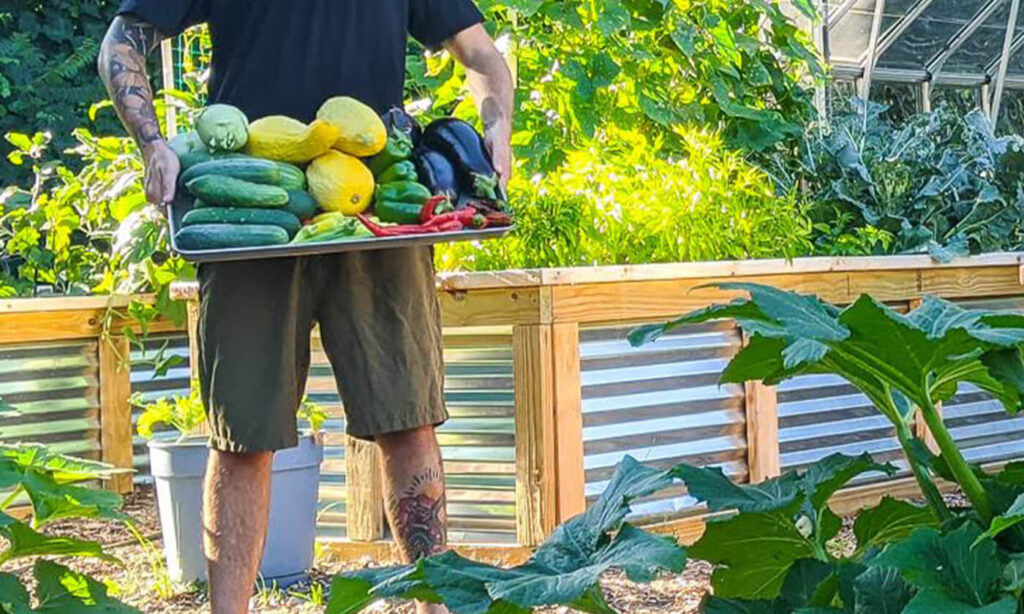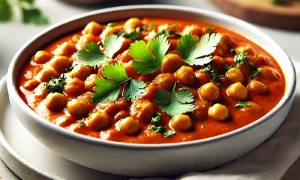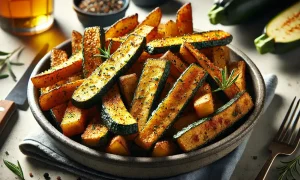Best Vegetable Gardening Options for Beginners

You’re itching to get your hands dirty and start your very own vegetable garden, but you don’t know where to begin. Don’t fret! This guide is designed specifically for beginners. It’s packed with the best vegetable garden options that’ll make your journey into gardening as smooth as possible.
Choosing the right vegetables to grow can be a daunting task, especially when you’re just starting out. But don’t worry, we’ve got your back. We’ll walk you through the best options that are not only easy to grow, but also yield a bountiful harvest.
Remember, everyone starts somewhere. With a little patience and the right information, you’ll be on your way to growing a successful vegetable garden in no time.
Key Takeaways
- Starting a vegetable garden as a beginner can be a rewarding experience, offering the ability to cultivate your own food, cut costs on grocery bills, build community connections, and contribute to a greener environment.
- Gardening isn’t limited to open spaces. Even those in urban areas can cultivate a variety of vegetables indoors or in containers, making use of balconies, windowsills, or small room corners.
- Selecting the right vegetables to grow is crucial to your gardening success.
- As a beginner, it’s smart to start with low-maintenance vegetables.
- Successful gardening requires careful planning and setup.
Why Start a Vegetable Garden as a Beginner?
Starting a vegetable garden as a beginner can be an enriching experience. It’s not just about growing your own food; it also provides you with a unique opportunity to learn and grow. There are a multitude of reasons to take this green thumb plunge.
For many beginners, the charm lies in the ability to cultivate your own sustenance. Homegrown vegetables often taste better than the ones you buy at the store because they are fresher and you have control over what gets used on them. You can wave goodbye to worries about excessive pesticides or preservatives. Everything that goes into your vegetables is handpicked by you.
Creating your own food source can also slice off a significant chunk from your grocery bill. Here’s an example comparison table of price estimates for store bought vs home grown vegetables.
If this table represented your garden, you’d be saving over $126 for the season!
| Vegetable | Store Price (per lb) | Homegrown Cost (per lb) | Garden Yield (lbs) | Savings (annual estimate) |
|---|---|---|---|---|
| Tomatoes | $2.19 | $0.75 | 20 | $28.80 |
| Bell Peppers | $1.29 | $0.85 | 15 | $6.60 |
| Green Beans | $1.99 | $0.25 | 10 | $17.40 |
| Zucchini | $1.49 | $0.35 | 15 | $17.10 |
| Radishes | $1.49 | $0.05 | 10 | $14.40 |
| Lettuce | $2.99 | $0.10 | 10 | $28.90 |
| Cucumbers | $1.19 | $0.30 | 15 | $13.35 |
Not only that, gardening can be a fantastic way to stay active. It’s a low-impact exercise that can help improve your mental and physical health. Tending to a garden demands patience, perseverance, and problem-solving skills – all attributes that could bring bring a rewarding balance to your life.
Moreover, your garden could turn into a conversation starter, bringing you closer to your community. Whether it’s trading tips about growing vegetables or sharing the fruits (or vegetables) of your labor with neighbors, the connections you build are priceless.
Starting a Garden in Small Spaces
But don’t forget, gardening isn’t just limited to open spaces. You could easily grow a variety of vegetables indoors or in containers. This allows even those living in urban areas to experience the joys of gardening. Your balcony, your windowsill, or even a small corner of your room could be the perfect place for your small garden to thrive.
Choosing the Right Vegetables
It’s crucial to discuss an essential factor that can often make or break a beginner’s experience – choosing the right vegetables. Picking suitable vegetables not only maximizes your chances of success but also ensures you reap the rewards of your hard work effectively and efficiently.
Consider Your Climate
The first step in this selection process lies in understanding your local climate. It’s significant to note that every vegetable has its preferred growing conditions. So, it’s advisable to align your choice with the climate of your area.
If you live in an area with high temperatures, go for heat-tolerant vegetables. Top amongst these are Tomatoes, Peppers, Eggplants, and Okra. On the other hand, if your locale is known for colder climes, consider growing Broccoli, Kale, Lettuce, and Peas.
This doesn’t mean you’re limited in what you can grow. It just may mean that you have to time your planting and harvesting correctly. For example, in Michigan, we can harvest root vegetables well into October most years. However, pepper plants only really thrive in the hot summer months and will not do well if planted too early or harvested too late.
| Preferred Climate | Examples |
|---|---|
| Heat-Tolerant Vegetables | Tomatoes, Bell Peppers, Hot Peppers, Eggplants, Okra |
| Cold-Tolerant Vegetables | Broccoli, Kale, Lettuce, Peas, Radishes, other root vegetables |
Selecting Low-Maintenance Vegetables
As a beginner, it’s smart to work with low-maintenance plant varieties. In other words, vegetables that are relatively easy to grow and don’t require constant attention. Such plants offer you a strong foundation in gardening and inspire confidence as you begin to see your efforts bear fruit.
Your go-to options could include plants like Zucchini, Radishes, Green Beans, and Spinach. They are not only easy to grow but also mature quite quickly. And nothing quite matches the excitement of witnessing your first homegrown produce.
To illustrate, let’s draw up another markdown table for an at-a-glance view:
| Low-Maintenance Vegetables | Maturity Time |
|---|---|
| Zucchini | 45-55 days |
| Radishes | 22-70 days |
| Green Beans | 50-60 days |
| Spinach | 37-45 days |
Planning and Setting Up Your Garden
Now that you’ve selected the best vegetables for your locale and skill level, it’s time to focus on planning and setting up your garden. Here we’ll explore key steps to guide you during this essential phase of your gardening journey.
Determining Garden Location
An crucial factor in gardening success is appropriate location. You’ll want to choose a spot in your yard or on your balcony that provides an ample amount of sunlight, as most vegetables require a good 6 to 8 hours of direct sunlight daily.
It’s equally necessary to consider water accessibility and soil quality. Your chosen site should be close to a water source for easy watering, and your garden’s soil should be rich and well-drained.
Types of Garden Beds
Next up is deciding on the type of garden bed that fits your need. The two primary choices are:
- In-ground beds: Traditional and allows for maximal space. It would require soil preparation before planting.
- Raised beds: Offers improved soil- and pest-management. They’re particularly beneficial in areas with poor native soil or drainage issues. There’s an upfront cost and effort for construction, but it often pays off.
Tools and Supplies You’ll Need
For your beginner vegetable garden, you’ll not unnecessarily need a shed full of tools. Streamline your supplies to the essentials:
- Gardening gloves: For protection from scratches, dirt, and moisture.
- Hand trowel: Useful for transplanting veggies, weeding and mixing soil.
- Watering can or hose: Depending on the size of your garden, this is vital for your plants’ well-being.
- Pruner: This will help maintain plant health by trimming and shaping.
Consider creating a list of these tools, so you’re in a better state of preparedness when the time comes. As you progress in your gardening journey, your toolset can grow along with your skills and ambitions.
You can also choose to get started with a garden toolkit, which should have everything you need to get growing! Check out this one that we recommend:
Maintaining Your Vegetable Garden
Now that you’re armed with the basics of setting up your first vegetable garden, it’s time to focus on maintaining it.
Whether you opt for an in-ground or raised bed garden, consistency is key. You’ll need to monitor sunlight exposure, water levels, and soil quality regularly. Don’t be afraid to get your hands dirty – it’s all part of the gardening journey.
As you gain experience, you’ll find that nurturing your garden becomes second nature. So roll up your sleeves, grab your gardening gloves, and get ready to watch your garden flourish. After all, there’s nothing quite like the satisfaction of harvesting your own fresh veggies. Happy gardening!
Frequently Asked Questions for New Gardeners
Where should I set up my vegetable garden?
Choose a location that gets six to eight hours of direct sunlight daily, has easy water access, and features rich, well-draining soil. Avoid areas under trees or close to large structures that might create too much shade.
What are the types of garden beds suitable for a beginner?
Beginners should consider in-ground beds, which use existing soil and are cost-effective, or raised beds, which offer better drainage and easier access. Choose based on your budget, available space, and physical comfort.
What essential tools are needed for a beginner’s vegetable garden?
Essential tools include gardening gloves, a hand trowel, a watering can or hose, pruners or secateurs, and a garden fork or spade. Quality tools can ease gardening tasks and last longer.
Why is soil preparation important for planting?
Proper soil preparation enhances soil structure, enriches nutrient content, and improves drainage, promoting healthy root development and increasing plant productivity.
What is the importance of sunlight and water in vegetable gardening?
Vegetables need at least six hours of sunlight for photosynthesis and consistent moisture for growth. Proper sunlight and watering are crucial for healthy plants and good yields.
How do I choose the right vegetables for my garden?
Select vegetables that grow well in your climate and soil type, and choose varieties that your family prefers to eat, maximizing enjoyment and yield from your garden.
How can I protect my vegetable garden from pests and diseases?
Be aware of local pests and diseases and use integrated pest management strategies like crop rotation, encouraging beneficial insects, and applying organic pesticides as needed. (Check out our natural garden pepper spray recipe)
What is the best time to plant my vegetable garden?
Start seeds indoors during late winter or early spring and transplant seedlings outdoors after the last frost date to ensure they thrive.
How should I space my plants in the garden?
Space plants according to their specific needs to ensure proper air circulation and growth, using companion planting to maximize space and improve plant health.
How do I maintain soil health throughout the growing season?
Regularly add compost or fertilizers and consider planting cover crops in the off-season to improve soil health, fix nitrogen, and prevent erosion.
What watering techniques are most effective?
Use efficient watering methods like drip irrigation, soaker hoses, or timed sprinkler systems to deliver water directly to the roots, minimizing waste and disease risk.







